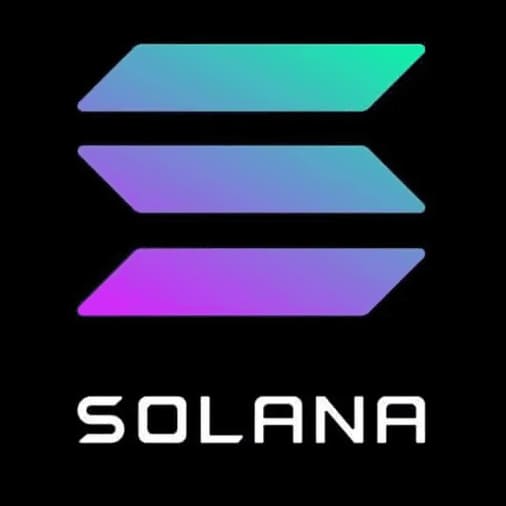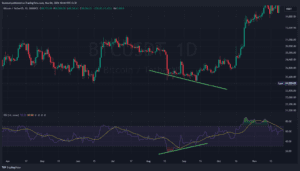Introduction
Imagine a blockchain platform that processes transactions at lightning speed, scales effortlessly, and charges mere fractions of a cent in fees—all while maintaining robust security and decentralization. Welcome to Solana, a high-performance blockchain that’s setting new standards in the world of decentralized applications (DApps), non-fungible tokens (NFTs), and decentralized finance (DeFi).
Since its inception, Solana has captured the attention of developers, investors, and tech enthusiasts alike. With the capability to process over 65,000 transactions per second and transaction fees as low as $0.00025, Solana is poised to become a cornerstone of Web 3.0 and the future of blockchain technology.
In this comprehensive guide, we’ll delve deep into Solana’s history, the groundbreaking technology that powers it, and its potential to reshape the digital landscape.
The Origins of Solana: Addressing Blockchain Scalability
The Blockchain Scalability Problem
Blockchain technology revolutionized the way we think about transactions, trust, and decentralization. However, as platforms like Bitcoin and Ethereum gained popularity, they faced a critical bottleneck: scalability.
- Limited Transactions Per Second (TPS): Bitcoin handles about 7 TPS, while Ethereum manages around 15 TPS.
- High Fees: During peak times, transaction fees can skyrocket, making micro-transactions impractical.
- Network Congestion: Increased usage leads to slower transaction confirmations and a backlog of unprocessed transactions.
These limitations hinder the mass adoption of blockchain technology, especially for applications requiring high throughput and low latency.
The Birth of Solana
Anatoly Yakovenko, a former engineer at Qualcomm with expertise in distributed systems and compression algorithms, recognized these challenges. In 2017, he conceptualized a blockchain that could scale without sacrificing security or decentralization.
- Vision: To create a blockchain capable of processing transactions at the speed of light.
- Innovation: Introduced the concept of Proof of History (PoH), a cryptographic clock that could timestamp transactions, enabling nodes to agree on the order of events without extensive communication.
- Founding Team: Joined by Greg Fitzgerald and Stephen Akridge, they founded Solana Labs.
In February 2018, Yakovenko published the Solana whitepaper. By March 2020, Solana launched its mainnet beta, showcasing its groundbreaking capabilities to the world.

The Technology Behind Solana
Solana’s architecture is a symphony of innovative technologies working in harmony to deliver unmatched performance.
Proof of History (PoH)
At the core of Solana lies Proof of History, a novel solution to the time synchronization problem in distributed networks.
- Cryptographic Clock: PoH creates a historical record that proves events have occurred in a specific sequence.
- Verifiable Delay Function (VDF): Uses a sequential hash function (SHA256), where each output depends on the previous one, creating a chain of hashes.
- Benefits:
- Eliminates the need for timestamps from external sources.
- Reduces the communication overhead among nodes.
- Enhances throughput by allowing validators to process transactions without waiting for consensus on time.
Tower BFT: Solana’s Consensus Mechanism
Building upon PoH, Tower Byzantine Fault Tolerance (BFT) is Solana’s adaptation of the Practical Byzantine Fault Tolerance (PBFT) algorithm.
- Optimized for PoH: Leverages the cryptographic clock to reduce message overhead and latency.
- Fast Finality: Transactions achieve finality in seconds.
- Security: Can tolerate up to one-third of malicious nodes, maintaining network integrity.
Parallel Processing with Sealevel
Sealevel is Solana’s runtime that enables parallel transaction processing.
- Smart Contract Execution: Allows simultaneous execution of non-overlapping transactions.
- GPU Acceleration: Takes advantage of modern hardware for enhanced performance.
- Horizontal Scaling: Supports scaling across multiple cores and machines.
| Feature | Description |
|---|---|
| Parallelism | Executes thousands of contracts in parallel. |
| Efficiency | Minimizes redundant computation and resource usage. |
| Scalability | Adapts to the available hardware, ensuring optimal performance. |
Gulf Stream: Mempool-less Transaction Forwarding
Gulf Stream is Solana’s solution for efficient transaction propagation.
- Eliminates Mempool: Forwards transactions to the next set of validators before current block confirmation.
- Reduces Latency: Accelerates transaction processing and leader switching.
- High Throughput: Supports up to 100,000 TPS by handling transaction caching and forwarding.
Turbine: A Block Propagation Protocol
Turbine enhances data transmission across the network.
- Data Sharding: Breaks blocks into smaller packets.
- Efficient Broadcasting: Distributes packets using a tree structure, reducing bandwidth requirements.
- Reliability: Ensures data reaches all validators quickly and securely.
Cloudbreak: Horizontally Scaled Accounts Database
Cloudbreak is Solana’s approach to data storage.
- Concurrent Reads and Writes: Optimized for handling a large number of accounts.
- Scalability: Designed to scale with hardware improvements.
- Efficiency: Manages state information effectively, crucial for high transaction volumes.
Solana’s Token Economics: SOL and Staking
The native cryptocurrency of the Solana network is SOL.
- Utility:
- Transaction Fees: Used to pay for network transactions and smart contract executions.
- Staking: SOL holders can stake their tokens to become validators or delegate to validators.
- Governance: Planned to be used for on-chain governance proposals.
- Token Supply:
- Initial Supply: Approximately 500 million SOL tokens.
- Inflationary Model: Solana employs an inflation schedule with a decreasing rate, incentivizing early participation.
Staking and Delegation
- Validators:
- Role: Process transactions and secure the network.
- Rewards: Earn SOL through staking rewards and transaction fees.
- Delegators:
- Role: Stake their SOL to validators without running a node.
- Rewards: Receive a portion of the validator’s rewards.
| Action | Requirement | Benefit |
|---|---|---|
| Staking | Hold SOL tokens | Earn staking rewards |
| Validating | Run a validator node with SOL | Secure network and earn higher rewards |
The Flourishing Solana Ecosystem
Solana’s ecosystem has witnessed exponential growth, attracting developers, investors, and users.
Decentralized Applications (DApps) on Solana
Developers are leveraging Solana’s speed and scalability to build innovative DApps.
- Serum:
- Description: A high-speed, non-custodial decentralized exchange (DEX) with an order book model.
- Impact: Offers trading experiences comparable to centralized exchanges.
- Raydium:
- Description: An automated market maker (AMM) and liquidity provider.
- Features: Yield farming, staking, and integration with Serum’s order books.
- Audius:
- Description: A decentralized music streaming platform.
- Benefit: Empowers artists with better revenue models and ownership rights.
Non-Fungible Tokens (NFTs) on Solana
Solana’s low fees and high throughput make it ideal for NFTs.
- Solanart:
- Function: Leading NFT marketplace on Solana.
- Collections: Houses popular NFT projects like Degenerate Ape Academy and Aurory.
- Metaplex:
- Description: A protocol for creating and hosting NFT storefronts.
- Advantage: Allows artists to launch their own branded NFT experiences.
Decentralized Finance (DeFi) on Solana
Solana is rapidly becoming a DeFi hub.
- Saber:
- Function: A cross-chain stablecoin exchange.
- Benefit: Low-slippage swaps and yield farming opportunities.
- Sunny Aggregator:
- Description: A yield aggregator that maximizes returns across protocols.
- Feature: Automates yield optimization strategies.
- Mango Markets:
- Function: A decentralized trading platform with margin and perpetual futures.
- Advantage: Combines liquidity and usability for advanced trading.
| Project | Category | Unique Selling Point |
|---|---|---|
| Serum | DEX | High-speed trading with order books |
| Raydium | AMM | Deep liquidity and integration with Serum |
| Saber | Stablecoin Swap | Efficient cross-chain swaps |
| Mango Markets | Trading Platform | Margin trading and futures on Solana |
Challenges and the Road Ahead
Network Stability Issues
Solana has faced network outages and performance hiccups.
- September 2021 Outage:
- Cause: Resource exhaustion due to a surge in transaction load.
- Duration: Network was down for approximately 17 hours.
- Implications:
- Trust: Raised concerns about reliability.
- Response: Solana Labs released updates to improve network robustness.
Decentralization Concerns
Critics point out potential centralization factors.
- Validator Distribution:
- Hardware Requirements: Running a validator node requires powerful hardware.
- Barrier to Entry: High costs may limit the number of validators.
- Geographic Concentration:
- Risk: Nodes concentrated in specific regions may pose systemic risks.
Security and Smart Contract Audits
Security remains paramount.
- Smart Contract Bugs:
- Risk: Vulnerabilities can lead to significant financial losses.
- Solution: Emphasis on thorough audits and formal verification.
- Recent Exploits:
- Examples: Some DeFi projects on Solana have suffered exploits due to smart contract flaws.
- Response: Increased focus on security practices and developer education.
Competitors and the Multichain Future
Solana operates in a competitive landscape.
- Ethereum 2.0:
- Upgrade: Aims to improve scalability through sharding and Proof of Stake.
- Binance Smart Chain (BSC):
- Advantage: Offers fast transactions with low fees.
- Avalanche and Polkadot:
- Innovation: Focus on interoperability and customizable blockchains.
The Future of Solana: Innovations and Opportunities
Expanding the Ecosystem
Solana is committed to fostering growth.
- Developer Grants:
- Purpose: Encourage innovation and development on Solana.
- Hackathons and Events:
- Impact: Attract talent and bring new projects to the ecosystem.
- Partnerships:
- Examples: Collaborations with Chainlink for decentralized oracles and USDC for stablecoin integration.
Web 3.0 and Solana
Solana is positioned to be a foundational layer for Web 3.0.
- Decentralized Internet:
- Goal: Empower users with ownership and control over data.
- Scalable Infrastructure:
- Benefit: Supports complex applications like decentralized social media, gaming, and metaverse platforms.
Scaling and Network Upgrades
Continuous improvement is a priority.
- Upcoming Features:
- Transaction Parallelization: Further enhancements to Sealevel.
- Fee Optimization: Dynamic fee structures to manage network load.
- Community Involvement:
- Governance: Plans for on-chain governance to involve the community in decision-making.

Conclusion
Solana stands at the forefront of blockchain innovation, addressing the critical scalability issues that have long hindered widespread adoption. With its unique combination of Proof of History, advanced consensus mechanisms, and a robust architecture, Solana delivers a platform where speed, security, and decentralization coexist.
As the blockchain space evolves towards a multichain future, Solana’s role becomes increasingly significant. Its thriving ecosystem of DApps, NFTs, and DeFi platforms demonstrates the network’s capability and potential. While challenges remain, particularly regarding network stability and decentralization, Solana’s proactive approach to development and problem-solving positions it well for sustained growth.
For developers, investors, and enthusiasts, Solana offers a glimpse into the future of blockchain—a future where technology empowers innovation without limits.
Resources
To delve deeper into Solana, explore the following resources:
- Solana Official Website
- Solana Whitepaper
- Solana GitHub Repository
- Solana Documentation
- Solana Developer Resources
- Solana Reddit Community
- History of Bitcoin
Tags: Solana history, Solana technology, blockchain scalability, Proof of History, decentralized applications, NFTs, DeFi, Solana ecosystem, Web 3.0, blockchain innovation






No comment yet, add your voice below!